Modern businesses in the USA are navigating a complex and challenging landscape. The global economic outlook 2025 points towards continued uncertainty, while persistent US inflation trends are putting unprecedented pressure on operational budgets. In this climate, the demand for marketing strategies that are not only effective but also hyper-efficient has never been greater. Traditional methods are proving too costly and slow to keep pace, forcing leaders to seek technological solutions that deliver a clear and immediate return on investment. This is precisely where the real impact of ChatLLM’s Multi-Model AI for modern businesses emerges as a transformative force.
Table of Contents
This is not just another incremental update in AI marketing tools USA has to offer; it represents a fundamental paradigm shift. A multi-model AI approach moves beyond the limitations of single-function tools to provide a holistic, integrated ecosystem for creation, automation, and optimization. For AI for marketers, this means unlocking new levels of precision and efficiency. This article provides a deep, evidence-based exploration of how the ChatLLM AI platform is reshaping business operations, driving unprecedented growth in customer engagement, and offering a strategic advantage in a volatile economic environment. We will delve into how this powerful generative AI in business applications is not just a competitive edge but a necessary evolution for survival and success in digital marketing 2025.

Decoding Multi-Model AI: A Paradigm Shift Beyond Single Models
The term “AI” has become ubiquitous, but understanding the nuances between different architectures is critical for strategic implementation. The rise of multi-model AI represents one of the most significant advancements for practical business application, offering capabilities far beyond those of earlier, single-modality systems.
What is Multi-Model AI? A Clear Definition for 2025
At its core, multi-model AI is a type of artificial intelligence that can process, understand, and generate information from multiple types of data—or “modalities”—simultaneously. These modalities include text, images, audio, video, and structured data like spreadsheets or databases.
Think of it as the difference between an AI that can only read a book and an AI that can read the book, see the illustrations, listen to the audiobook, and connect all these inputs to form a deep, contextual understanding. This integrated comprehension is what makes multi-model AI a far more powerful tool for businesses than its predecessors. This is a crucial evolution for any serious AI for marketers.

Why Multi-Model is a Leap Forward for Business Intelligence
The business world is not text-only. Decisions are made by analyzing sales charts (data), customer feedback from calls (audio), product images (visuals), and market reports (text). Even a powerful single-model AI from a previous generation could only handle the text portion effectively.
A multi-model AI platform, especially one integrating the capabilities of next-generation models like GPT-5, can synthesize these disparate data streams to uncover insights that would otherwise remain hidden. It can correlate a spike in customer support calls mentioning a specific issue with a drop in sales for a particular product, all while analyzing social media images to understand public sentiment. This holistic view is the bedrock of intelligent predictive analytics marketing and a core component of modern generative AI in business.
Introducing the ChatLLM AI Platform: An Integrated Ecosystem
The ChatLLM AI platform is designed from the ground up as an integrated ecosystem built on these multi-model principles. It is not merely a large language model but a comprehensive suite of tools that work in concert.
Its architecture includes:
- Advanced Generative Models: Leveraging the groundbreaking power of next-generation models like the anticipated GPT-5 and Llama 4 for sophisticated text and image generation.
- The DeepAgent Workflow Engine: An AI agent automation system that executes complex, multi-step tasks across different applications.
- Advanced Analytics: A powerful engine for processing structured data and uncovering trends, essential for real-time campaign optimization.
This combination makes the ChatLLM AI platform a formidable solution for any organization looking to harness the full potential of generative AI in business.
Navigating the 2025 Economic Landscape with AI-Driven Agility
The current economic climate demands more than just creativity from marketers; it demands financial acumen and operational agility. The pressures from the global economic outlook 2025 and domestic US inflation trends are forcing a pivot towards technologies that can demonstrably improve efficiency and maximize ROI.
The Direct Impact of the Global Economic Outlook 2025 on Marketing Budgets
As global markets remain volatile, CFOs and CMOs are under immense pressure to justify every dollar of spending. The era of experimental budgets is over. Marketing leaders must now operate as strategic business partners, linking every campaign directly to revenue.
This is where AI marketing tools USA businesses are adopting come into play. A multi-model AI system provides the deep analytics needed to forecast campaign outcomes with greater accuracy, ensuring that resources are allocated to the initiatives most likely to succeed. It transforms marketing from a cost center into a predictable revenue driver.
Combating US Inflation Trends with Hyper-Efficient Campaign Automation
Inflation directly impacts marketing by increasing costs across the board—from ad spend (CPCs and CPMs) to agency fees and software licenses. The most effective way to counteract this is by boosting internal productivity and automating resource-intensive tasks.
Customer engagement automation is a prime example. By using a multi-model AI to handle routine inquiries, segment audiences, and deliver personalized follow-ups, businesses can free up their human teams to focus on high-value strategic work. This isn’t about replacing marketers; it’s about augmenting their capabilities and making the entire operation more resilient to economic pressures.
Using AI to Analyze Financial News and Pivot Marketing in Real-Time
In today’s interconnected world, market conditions can change in an instant. A news event on one side of the globe can impact consumer sentiment and purchasing behavior in the US overnight. Businesses that can react quickly have a significant competitive advantage.
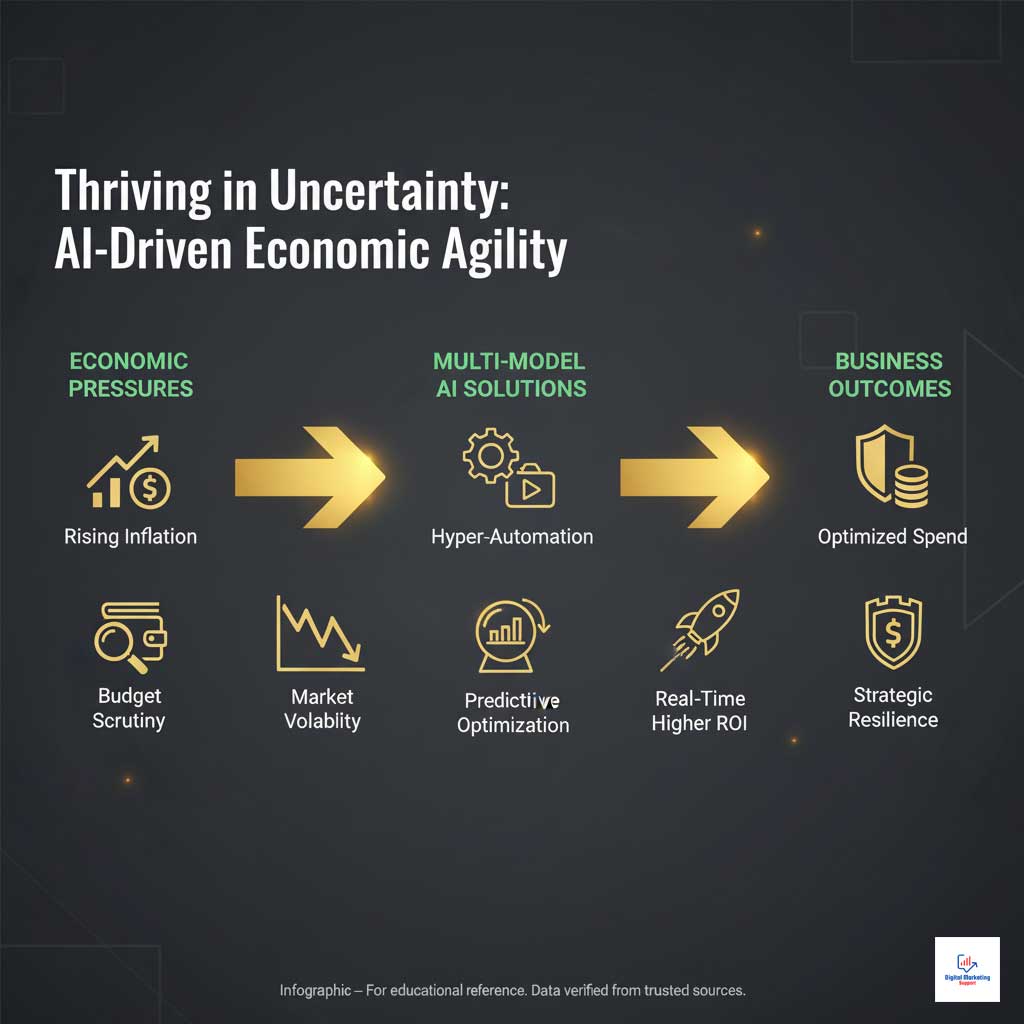
Advanced AI for marketers can be configured to monitor financial news digital marketing trends and other relevant data sources in real-time. Imagine an e-commerce brand that sells outdoor gear. The AI could detect a weather report predicting an unseasonable cold snap in a key region and automatically launch a targeted ad campaign for thermal wear, all without human intervention. This is the power of real-time campaign optimization.
Revolutionizing Customer Engagement with AI-Powered Personalization at Scale
Personalization has long been the holy grail of marketing. However, achieving it at scale has been a persistent challenge. AI-powered personalization is finally making this a reality, and multi-model AI is at the forefront of this transformation, enabling a depth of individualization that was previously impossible.
AI-Powered Personalization: The Engine of Modern E-commerce and Retail
Modern e-commerce AI platforms thrive on their ability to understand and predict customer needs. A multi-model AI platform takes this to the next level by building a truly unified customer profile. It doesn’t just look at past purchases; it analyzes which product images a user hovered over, the questions they asked a chatbot, and the sentiment of their product reviews.
Case Study: Top brands like Shopify, Instacart, and Airbnb are pioneers in using multi-model principles. They combine geographic data, user browsing behavior (visual), and search queries (text) to deliver highly relevant recommendations that feel intuitive and helpful. This deep level of AI-powered personalization is a key driver of their customer loyalty and market leadership. The right AI marketing tools USA businesses deploy can make all the difference.
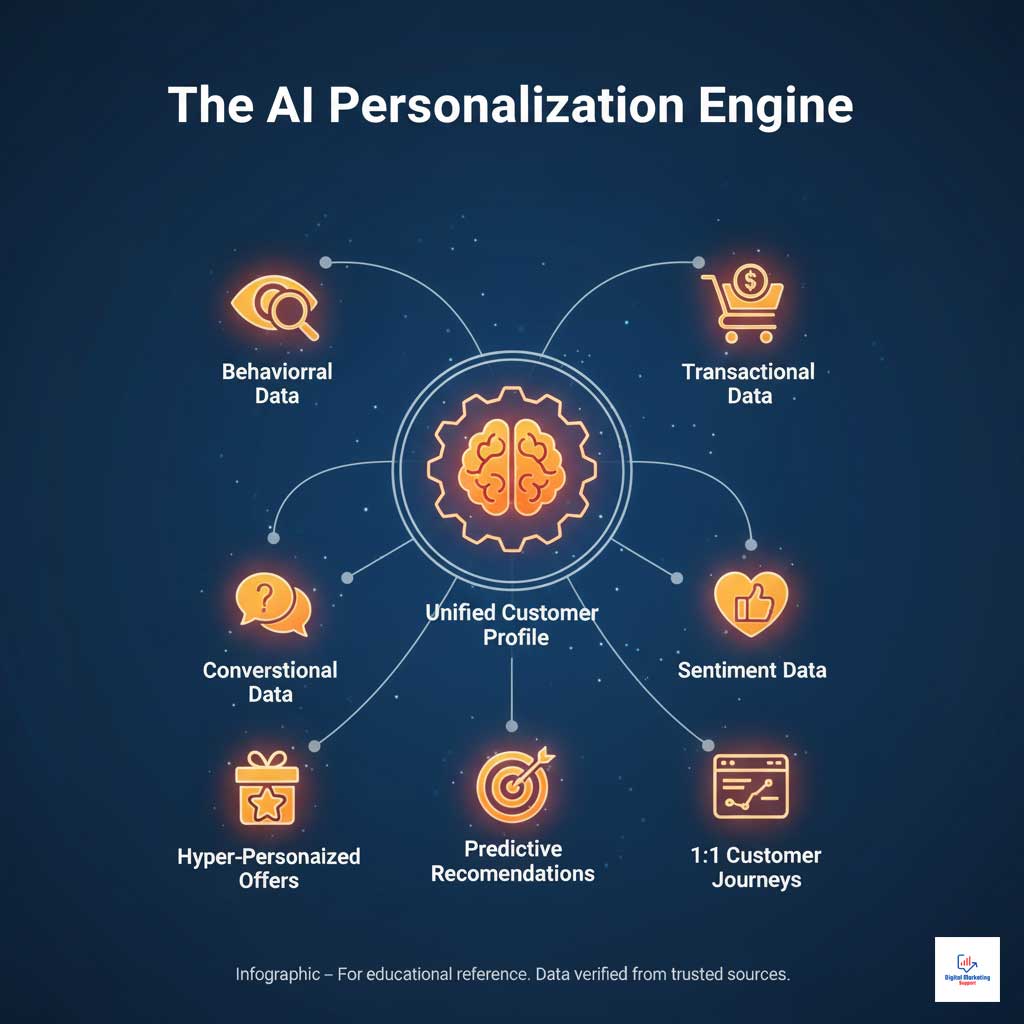
The DeepAgent Workflow Engine: Your Autonomous Marketing Team
The concept of automation is evolving rapidly thanks to tools like the DeepAgent workflow engine. This is not just about scheduling social media posts; it’s about deploying autonomous AI agents that can manage entire campaigns from start to finish. This is the future of AI agent automation.
Real-World Example: Consider the process of creating and promoting a webinar. Using the DeepAgent workflow engine, a marketer can initiate the process with a single prompt. The AI agent then:
- Analyzes CRM data to identify the ideal target audience.
- Generates a series of promotional emails with personalized subject lines and content.
- Creates a landing page with compelling copy and relevant imagery.
- Drafts the presentation slides based on a provided outline.
- Schedules the social media promotion across multiple platforms.
This powerful customer engagement automation transforms a week-long project into a task that takes mere minutes, dramatically increasing a team’s capacity and output.

Seamless Operations Through Cross-Platform Integrations
For automation to be truly effective, it must be seamless. The ChatLLM AI platform is designed for deep cross-platform integrations with the tools businesses already use every day.
By connecting with Slack, Microsoft Teams, and Google Drive, the AI can pull necessary documents, send real-time notifications to team members, and automatically store generated assets in the correct folders. This eliminates the friction of manual data transfer and ensures that the automated workflows are perfectly embedded within the company’s existing operational structure.
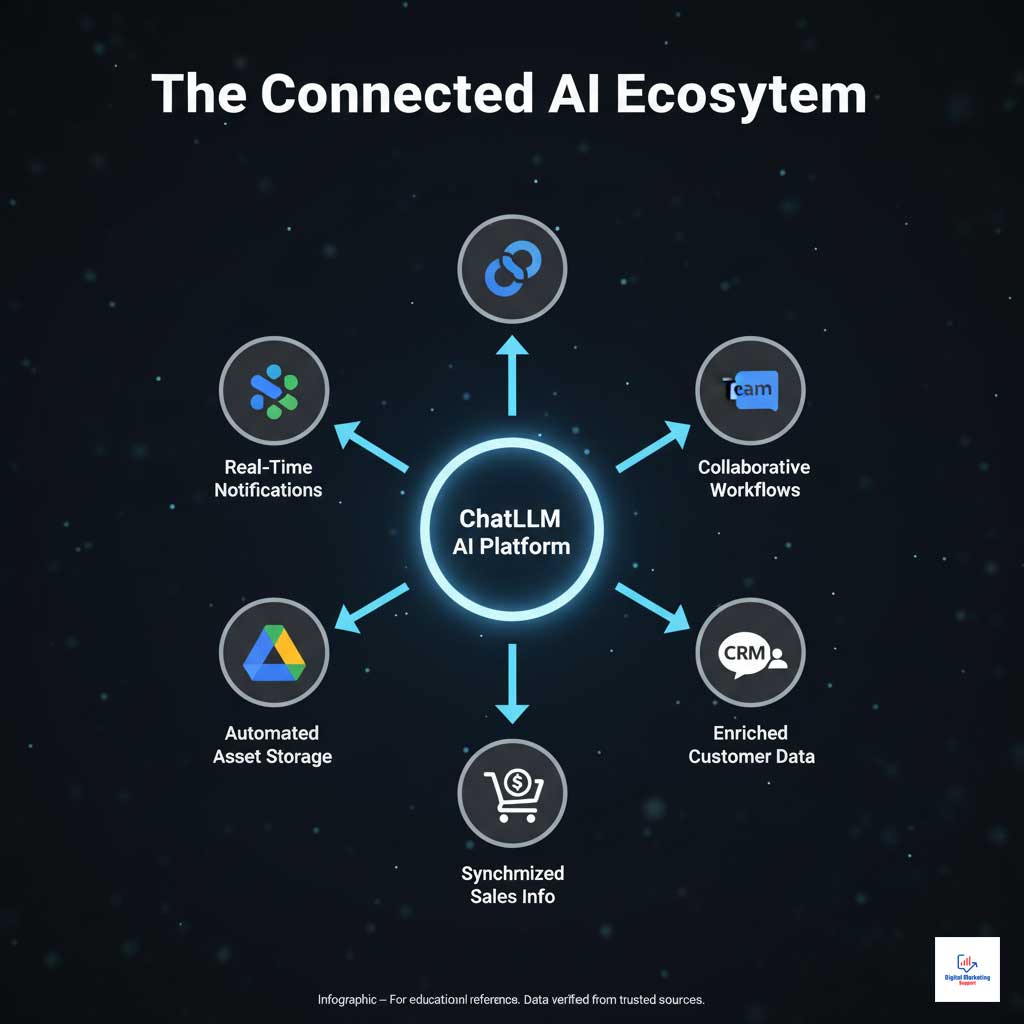
A Comparative Analysis: Choosing the Right AI Platform for Your Business
The market for AI marketing tools USA offers is crowded, and making the right choice is critical. Not all AI is created equal. Businesses need to understand the fundamental differences between integrated multi-model AI platforms, standalone large language models, and niche tools to select the solution that best aligns with their strategic goals. This analysis clarifies how the ChatLLM AI platform stands apart.
ChatLLM vs. Standalone LLMs vs. Niche AI Tools
The primary distinction lies in scope and capability. While niche tools excel at specific tasks and standalone models offer groundbreaking language capabilities, a multi-model AI platform provides an end-to-end solution designed for complex, integrated business processes.
| Feature | ChatLLM (Multi-Model Platform) | Standalone LLMs (e.g., GPT-5) | Jasper AI / MarketMuse (Niche Tool) |
| Core Function | Integrated marketing & business automation | Groundbreaking text generation & reasoning | Specialized SEO & marketing content creation |
| Data Modality | Text, Images, Data, Audio (Combined) | Primarily Text | Primarily Text |
| Best For | Complex, cross-channel campaigns, deep personalization, and workflow automation. | Unparalleled text generation, complex reasoning, and advanced conversational AI. | SEO content strategy, blog post generation, and on-page optimization. |
| Scalability | High; designed for enterprise-wide integration and complex agentic workflows. | Moderate; requires significant developer resources to scale into workflows. | High within its niche, but limited to content-related tasks. |
| Integration | Native cross-platform integrations (Slack, Teams, Google Drive, CRMs). | API-based; requires custom development for deep integration. | Offers some integrations, but focused on content and SEO platforms. |
| Use Case Example | Analyzing sales data to auto-generate a personalized video ad campaign. | Writing a series of high-quality, nuanced articles on a complex topic. | Identifying content gaps and generating an SEO-optimized article to fill it. |
This comparison highlights why for businesses aiming for comprehensive customer engagement automation and data-driven strategy, a multi-model AI approach is superior.
Practical Applications Across Key Business Functions
While marketing is a primary beneficiary, the impact of a sophisticated multi-model AI platform like ChatLLM extends across the entire enterprise. Its ability to process diverse data and automate complex workflows drives value in sales, customer support, and operations, making it a truly transformational technology.
Beyond Marketing: How Multi-Model AI Drives Enterprise-Wide Value
Implementing a powerful AI platform is an enterprise-level decision, and the ROI should be measured across all departments. The synergy created when sales, marketing, and support are all leveraging the same intelligent system is a powerful catalyst for growth and efficiency.
| Business Function | Key Application of Multi-Model AI | Expected Impact & ROI |
| Digital Marketing | Hyper-personalized ad creative generation and real-time campaign optimization. | 25-40% increase in lead conversion; improved ad spend efficiency. |
| Sales Enablement | Auto-generating sales scripts, analyzing sales calls (audio + transcript), and predicting lead scores. | Shorter sales cycles; increased sales team productivity by up to 30%. |
| Customer Support | AI chatbots that understand user screenshots, text, and sentiment for faster resolution. | 40-60% reduction in support ticket volume; higher customer satisfaction (CSAT) scores. |
| Operations | Analyzing supply chain data alongside news reports to predict and mitigate risks. | Improved operational efficiency; 15-20% reduction in risk of disruption. |
This data underscores that an investment in a multi-model AI platform is an investment in the core operational intelligence of the entire organization.
The New Frontier of Content and SEO in the Age of AI
The relationship between content creation and search engine optimization is being fundamentally reshaped by generative AI in business. Marketers must now think beyond keywords and backlinks and consider how their content is perceived by both human audiences and increasingly sophisticated AI algorithms.
Generative AI for Content: From Production to Branded Optimization
The initial wave of AI-driven content creation focused on speed and volume. The next frontier is about quality, relevance, and brand alignment. Branded content optimization ensures that every piece of AI-generated content—from a blog post to a social media update—perfectly reflects the company’s unique voice, style, and messaging guidelines.
Case Study: The tech company AppBuilder provides a compelling example. By leveraging a Claude-based routeLLM, they have been able to achieve high-velocity article production without sacrificing quality or brand consistency, demonstrating the power of specialized AI-driven content creation workflows. This is a core competency for successful digital marketing 2025.
Should You Optimize for LLMs or Search Engines in 2025? (The Answer is Both)
This is a critical question for every SEO professional and content strategist. The answer is not to choose one over the other but to adopt a unified strategy. The best ways to optimize for LLMs and search engines simultaneously revolve around creating high-quality, authoritative, and human-centric content.
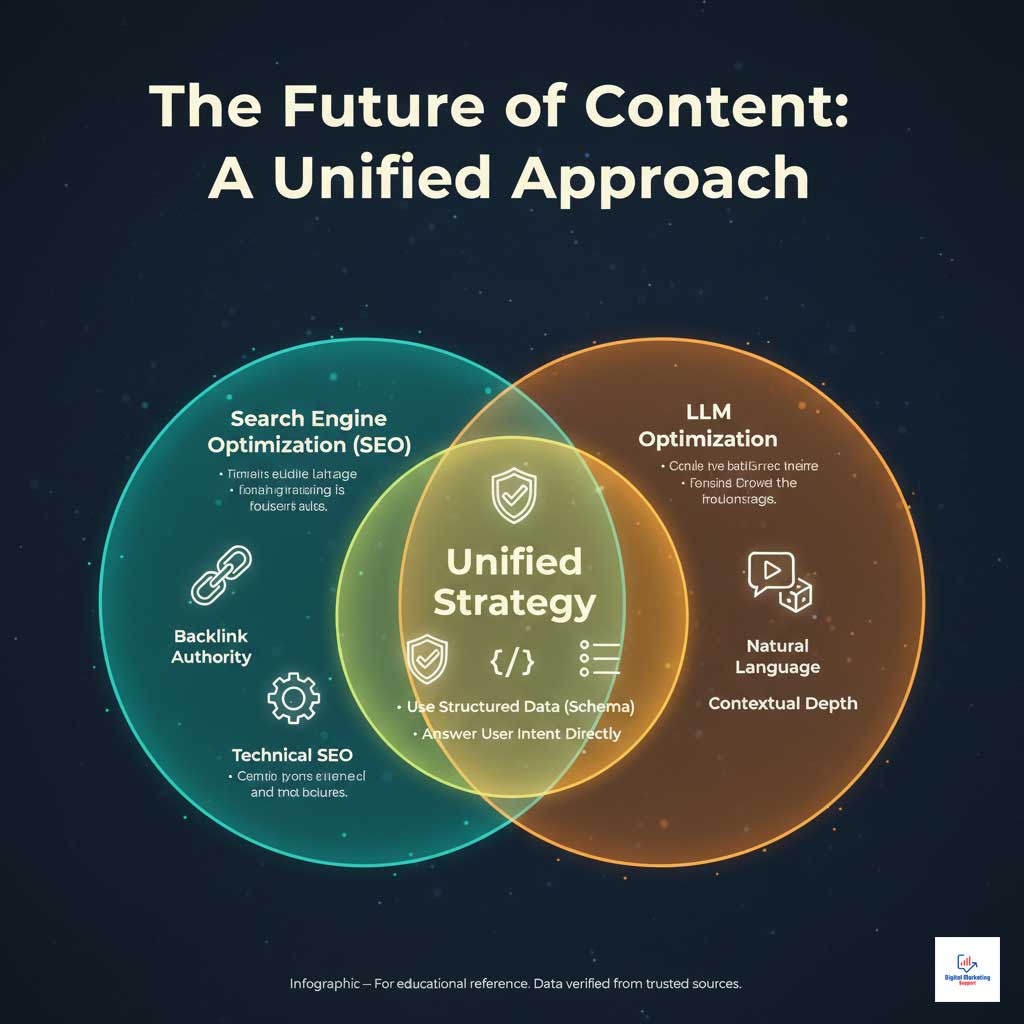
Actionable tips include:
- Use clear, hierarchical headings (H1, H2, H3) to structure your content logically.
- Implement FAQ and other relevant schema markup to provide explicit context to search engines.
- Write in natural, conversational language that directly answers user questions.
- Focus on demonstrating E-E-A-T (Experience, Expertise, Authoritativeness, Trustworthiness) throughout your content.
Using AI to Enhance Third-Party Mentions and Off-Page SEO
A robust off-page SEO strategy is still vital. Multi-model AI can significantly enhance these efforts. AI tools can continuously monitor the web for mentions of your brand, products, or key personnel.
When an unlinked mention is found, an AI agent can be triggered to automatically draft a personalized outreach email to the site owner, politely requesting that a link be added. This transforms a time-consuming manual process into an automated system for building a high-quality backlink profile, directly impacting third-party mentions SEO. This is a powerful tactic for any AI for marketers.
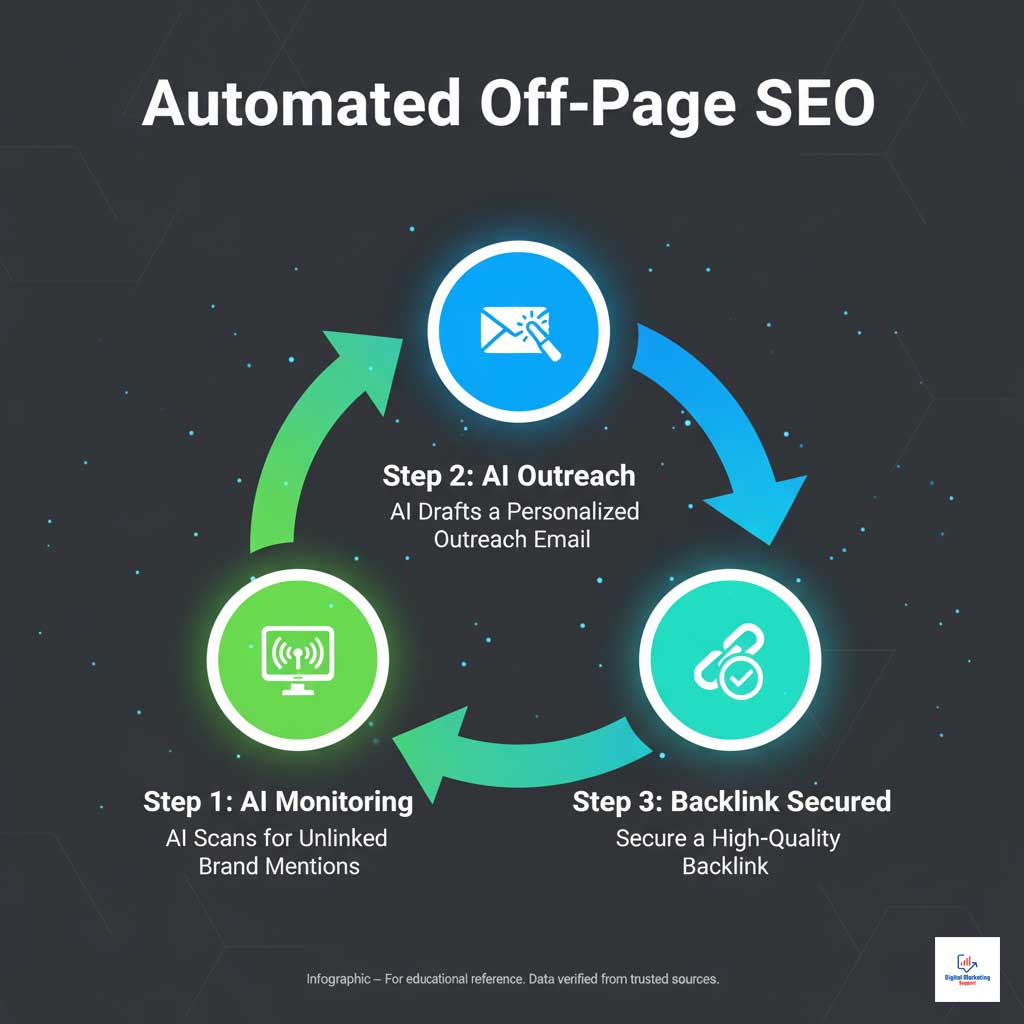
Summary & Key Takeaways: Embracing the Future with Multi-Model AI
In conclusion, the real impact of ChatLLM’s Multi-Model AI for modern businesses is not found in any single feature but in its capacity to provide a strategic, integrated solution to the core challenges of digital marketing 2025. In a demanding economic environment defined by the global economic outlook 2025 and US inflation trends, simply working harder is not enough. Businesses need to work smarter, and multi-model AI is the key to unlocking that potential.

The key takeaways are clear:
- Enhanced Personalization: Drive deeper connections and higher conversions with AI-powered personalization that understands customers on a holistic level.
- Radical Efficiency: Achieve significant cost savings and boost productivity through advanced customer engagement automation and the DeepAgent workflow engine.
- Data-Driven Agility: Make faster, more informed decisions with predictive analytics marketing and the ability to perform real-time campaign optimization.
The time to experiment with isolated AI marketing tools USA has to offer is over. The future belongs to businesses that embrace comprehensive, multi-model AI platforms to build a more intelligent, resilient, and competitive organization.
Frequently Asked Questions (FAQs)
What is the biggest implementation challenge when adopting a multi-model AI platform?
The primary challenge is often not the technology itself but the organizational shift required. It involves integrating data from different departments (sales, marketing, support) into a unified system and training teams to think in terms of automated, cross-functional workflows rather than siloed tasks.
How can small and mid-tier US businesses afford platforms like ChatLLM?
Many platforms are now offered with scalable pricing models (SaaS), allowing smaller businesses to start with a more limited feature set and expand as their needs and ROI grow. The key is to focus on initial use cases with a clear and measurable return, such as automating lead nurturing or customer support.
Does using generative AI for content risk Google penalties for unhelpful content?
The risk is not in using AI but in how it’s used. Google’s focus is on the quality and helpfulness of the content, not its origin. AI should be used as a tool to augment human expertise, create high-quality, original, and valuable content. Low-effort, mass-produced content will be penalized, whether written by a human or AI.
What role does prompt engineering play when using the DeepAgent workflow engine?
Prompt engineering is crucial. A well-crafted initial prompt acts as the strategic brief for the AI agent. It needs to be clear, specific, and provide all the necessary context, constraints, and goals for the workflow to be executed successfully.
Why is multi-model AI more effective than using a powerful standalone model like GPT-5?
While a groundbreaking standalone model like GPT-5 offers unparalleled capabilities in text understanding and generation, business challenges are rarely confined to a single data type. Multi-model AI is more effective because it can interpret the full context of a business problem—including data charts, product images, and customer audio—leading to more accurate insights and comprehensive solutions than even the most powerful single-modality tool can provide.
How is data privacy and the handling of PII managed within ChatLLM?
Data privacy AI marketing is a top priority. Reputable platforms like ChatLLM are built with robust security protocols, data encryption, and compliance with regulations like GDPR and CCPA. They often offer options for data anonymization and strict access controls to ensure personally identifiable information (PII) is handled responsibly.
Can multi-model AI help with video and audio content creation?
Yes. A multi-model AI platform can analyze an audio file for sentiment, transcribe it into text, summarize the key points, and even generate relevant video clips or images to accompany it, streamlining the production of multimedia content.
What is the learning curve for a marketing team to effectively use a multi-model AI platform?
Modern platforms are increasingly designed with user-friendly, no-code interfaces. While there is a learning curve in understanding how to design strategic workflows and prompts, the technical barrier to entry is much lower than it was a few years ago. Most teams can become proficient within a few weeks of dedicated training.
How will multi-model AI impact marketing jobs in the future?
It will cause a shift in skills. Repetitive, manual tasks will be automated, freeing up marketers to focus on strategy, creativity, brand building, and interpreting complex AI-driven analytics. Roles will evolve to become more strategic and analytical.
Which KPIs are most important to track when measuring the ROI of multi-model AI?
Beyond standard metrics like conversion rate and customer acquisition cost (CAC), important KPIs include Customer Lifetime Value (CLV), operational cost reduction, speed-to-market for new campaigns, and employee productivity gains.
Can multi-model AI improve ROI for US businesses?
Absolutely. The core value proposition of multi-model AI is its ability to directly improve ROI. It achieves this by increasing revenue through superior AI-powered personalization and decreasing costs through intelligent customer engagement automation, leading to a significant improvement in overall profitability.
How does ChatLLM change marketing strategies in the US?
The ChatLLM AI platform shifts marketing strategies from being reactive and channel-specific to being proactive, predictive, and customer-centric. It enables a level of speed and personalization that allows US businesses to adapt instantly to market changes and engage with customers in a more meaningful and effective way.








